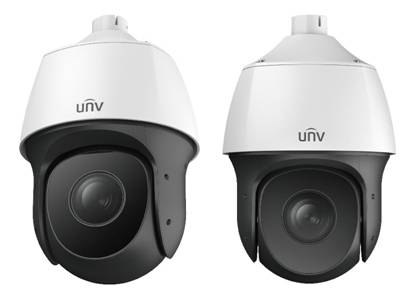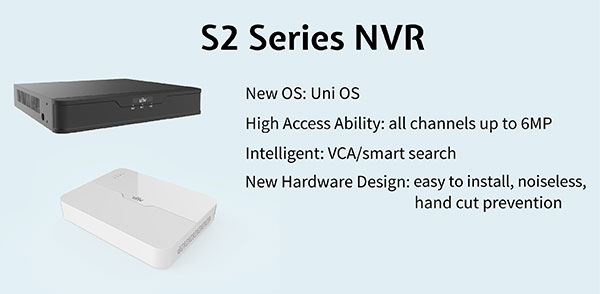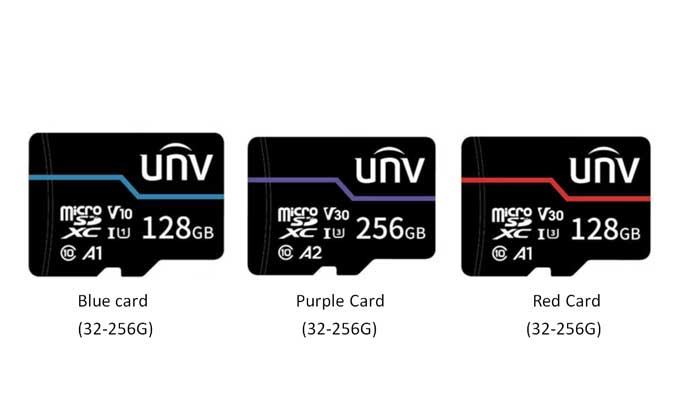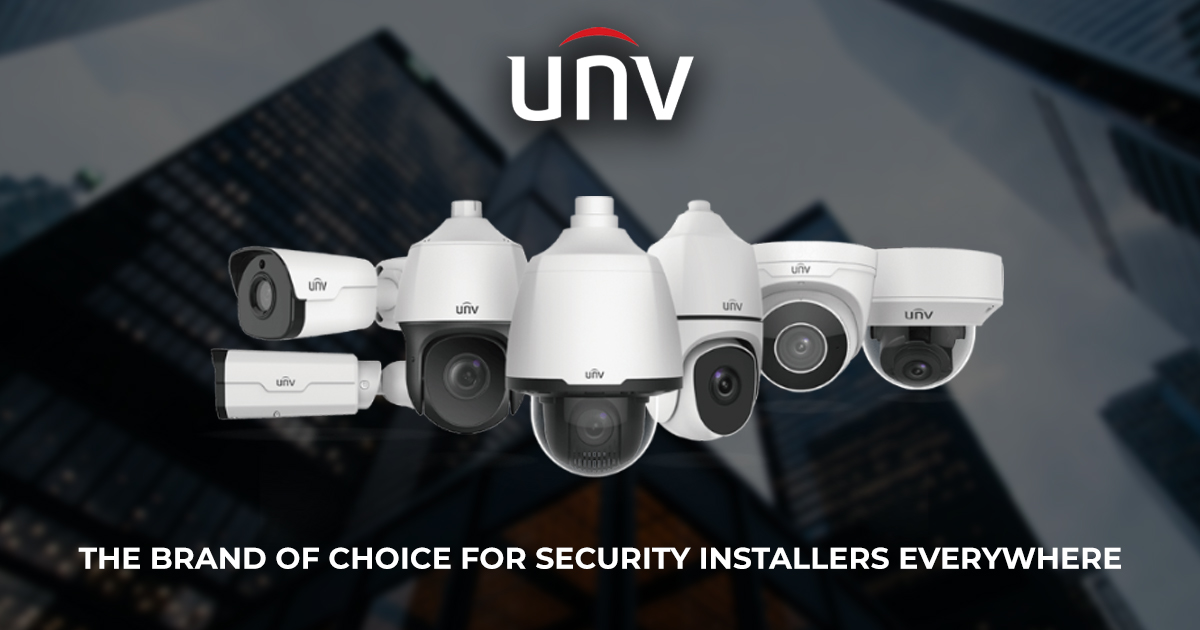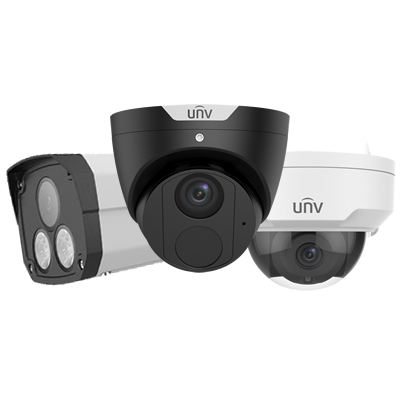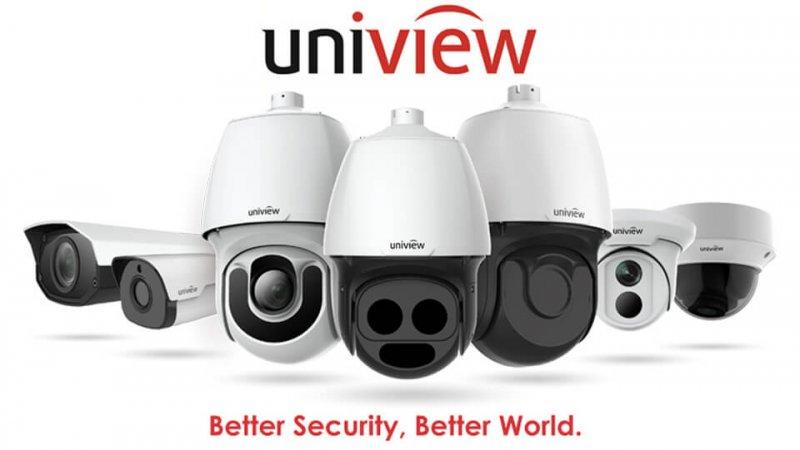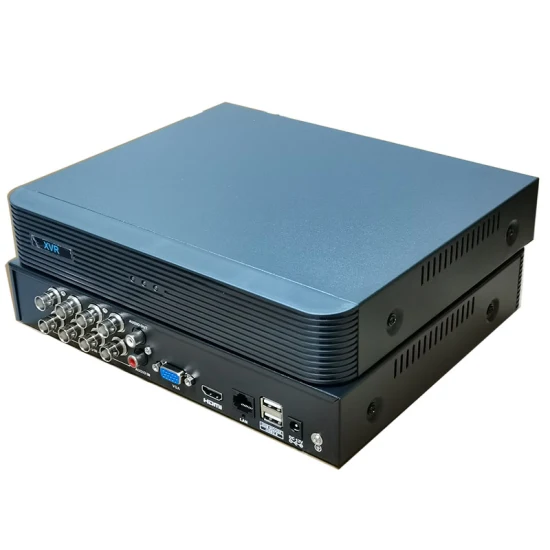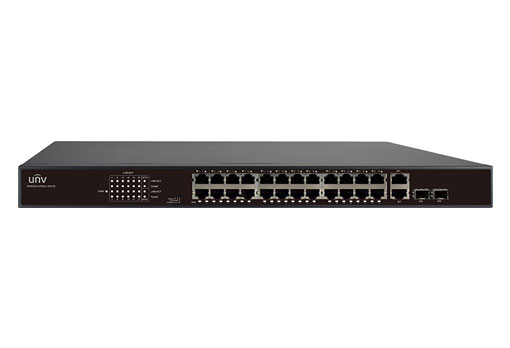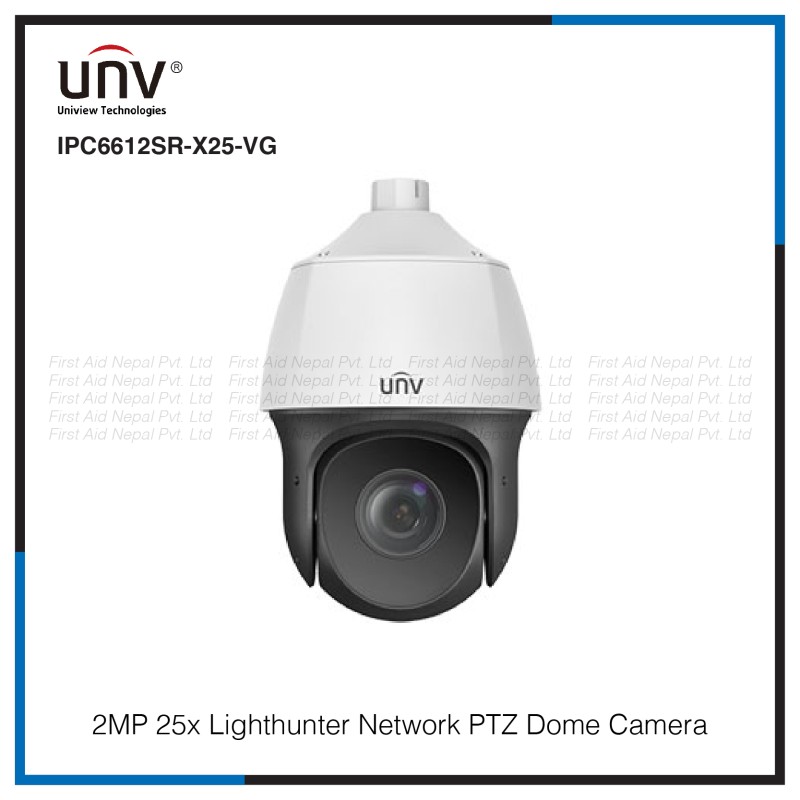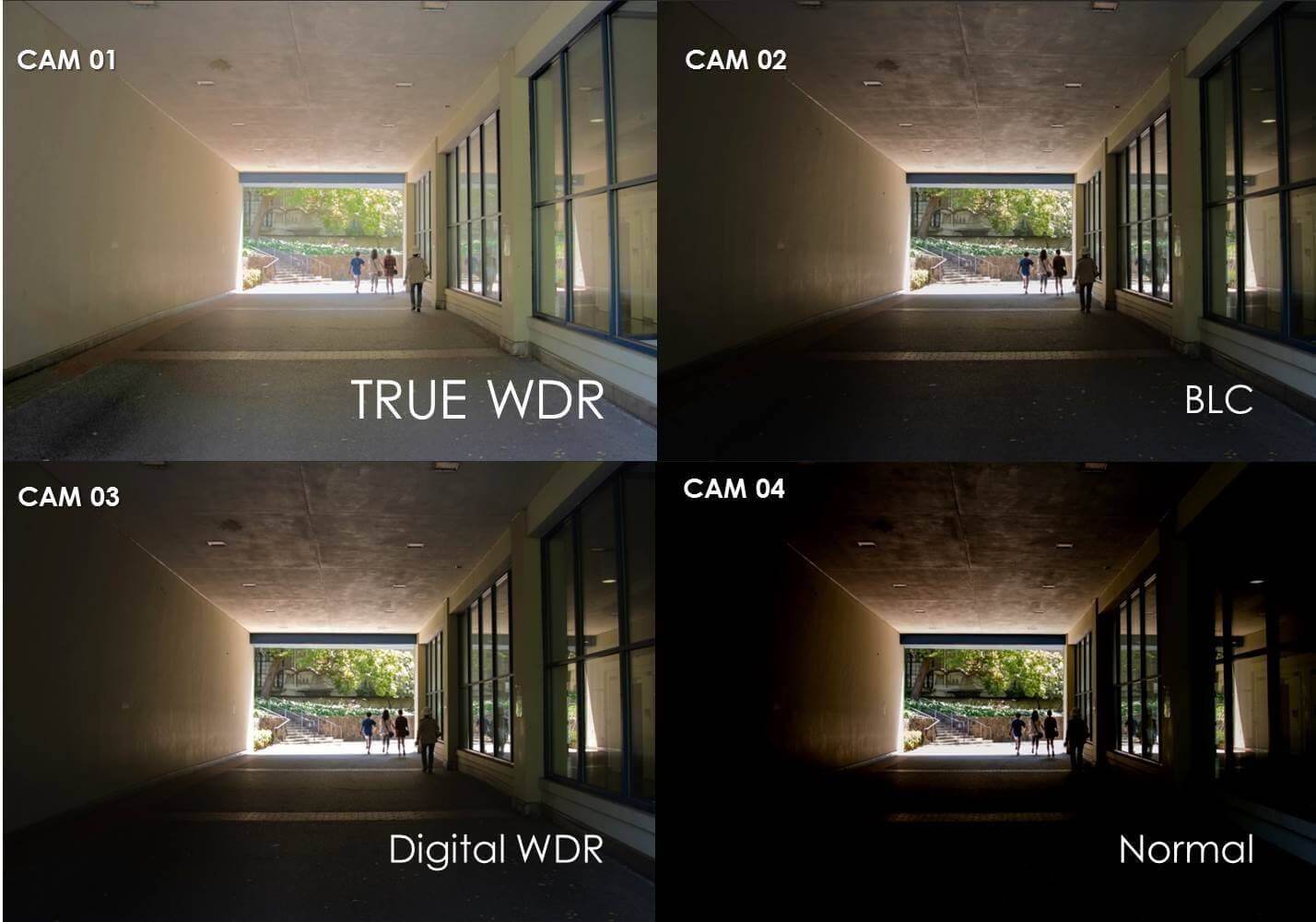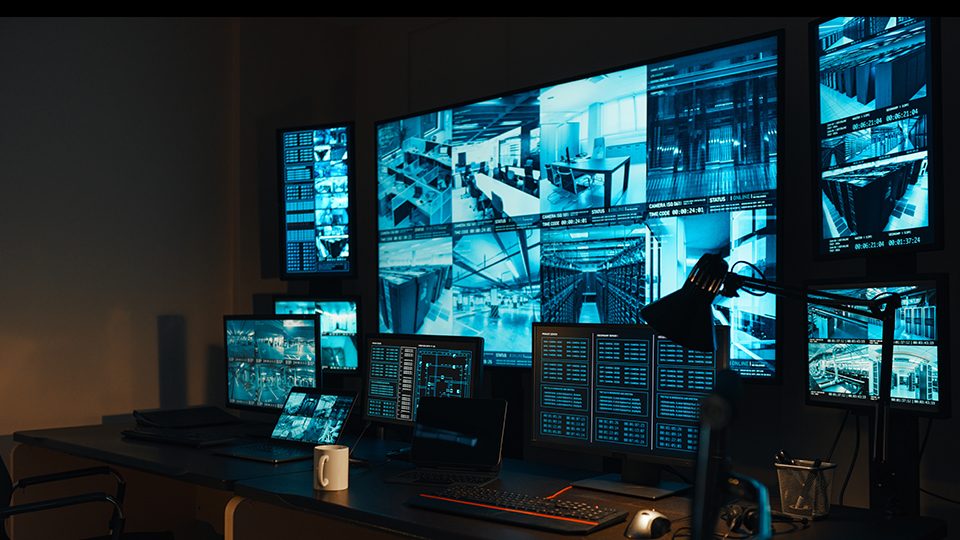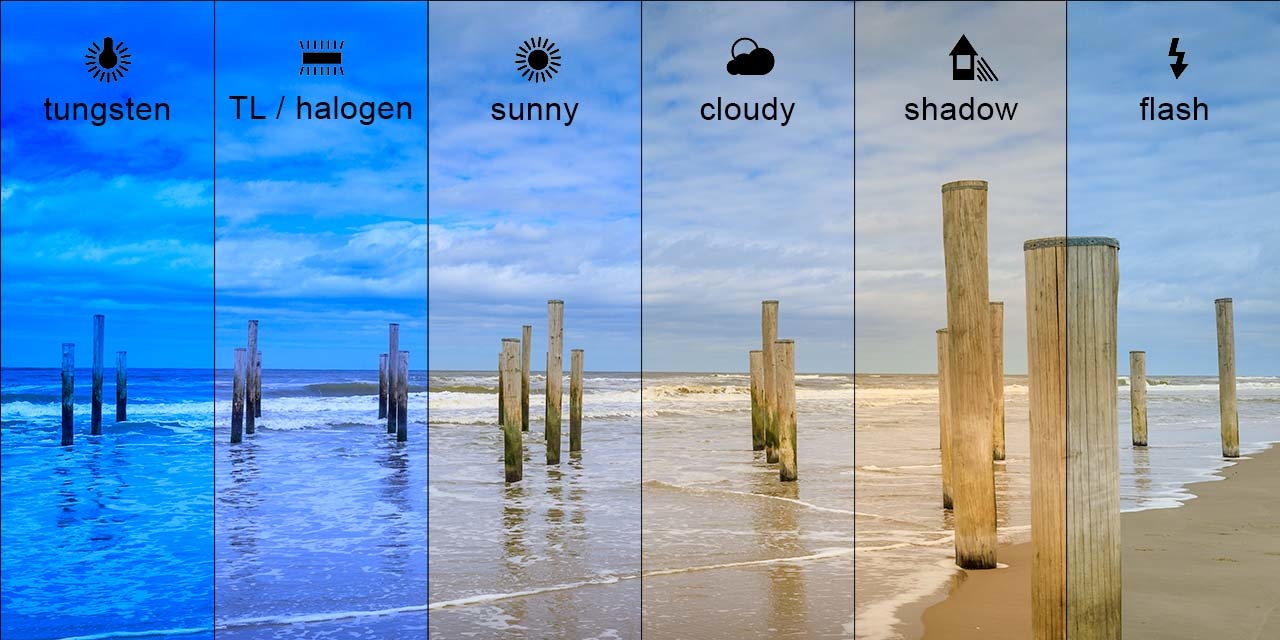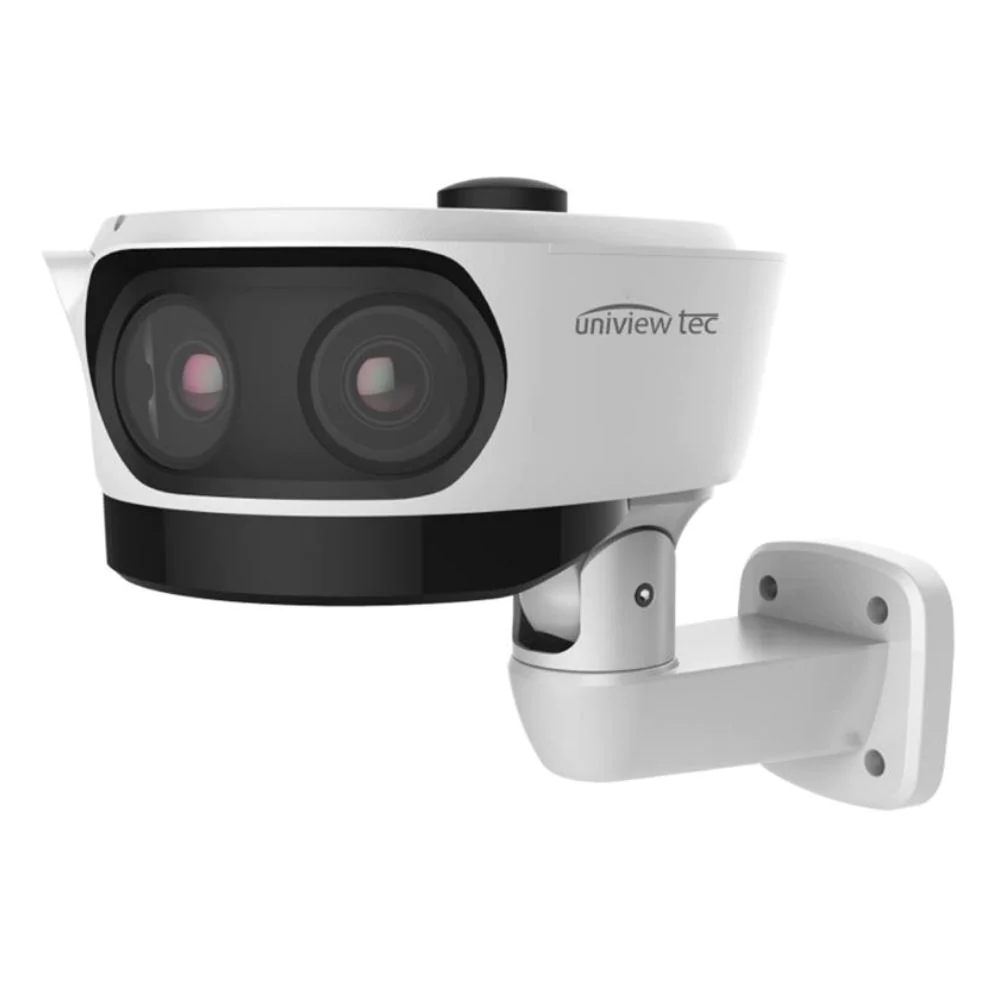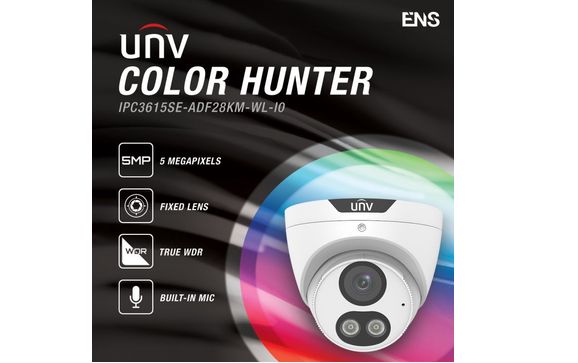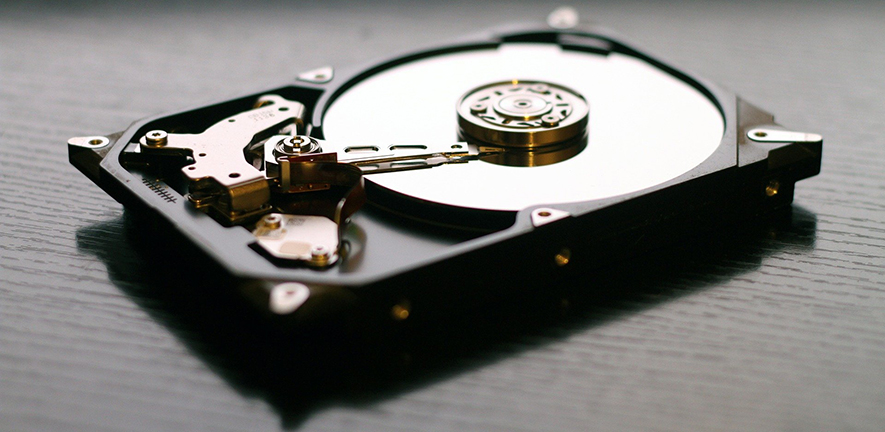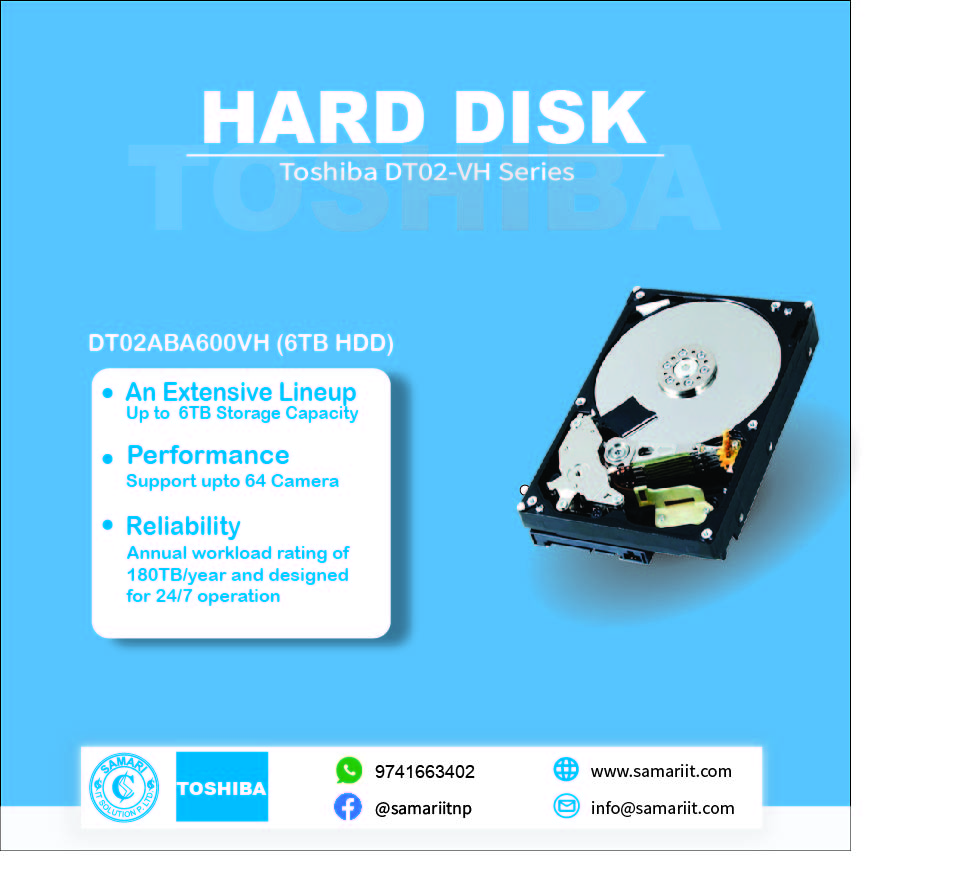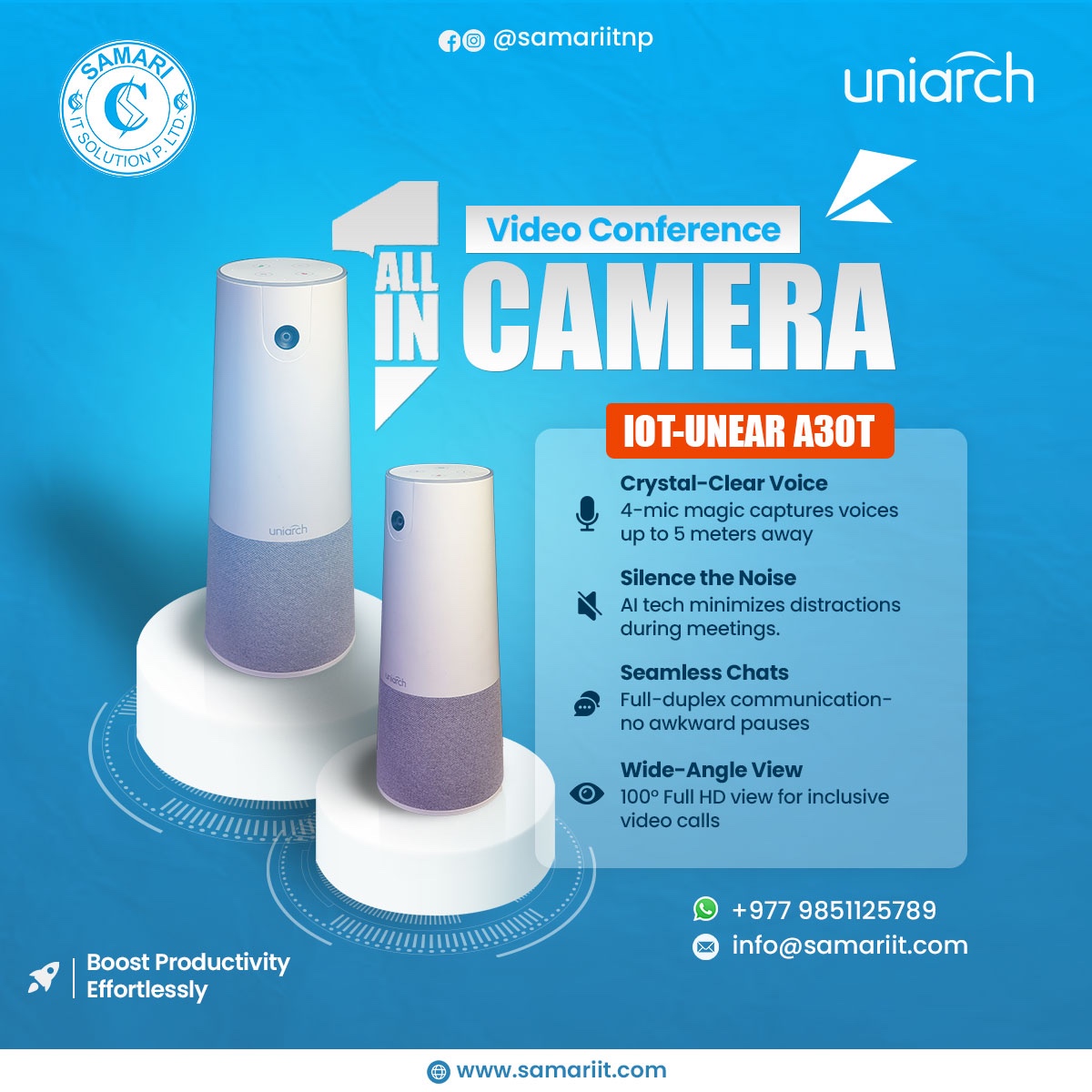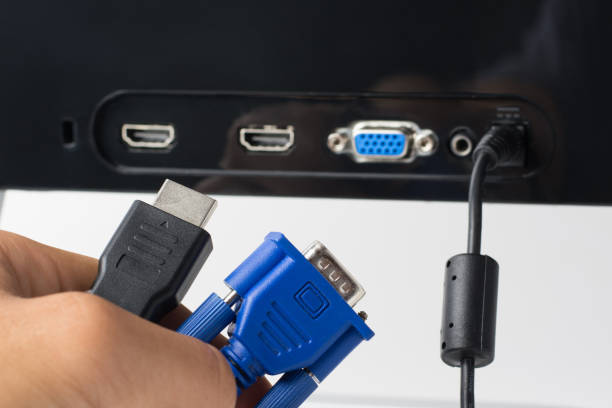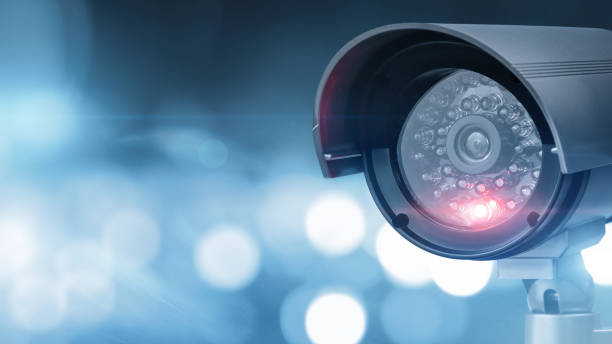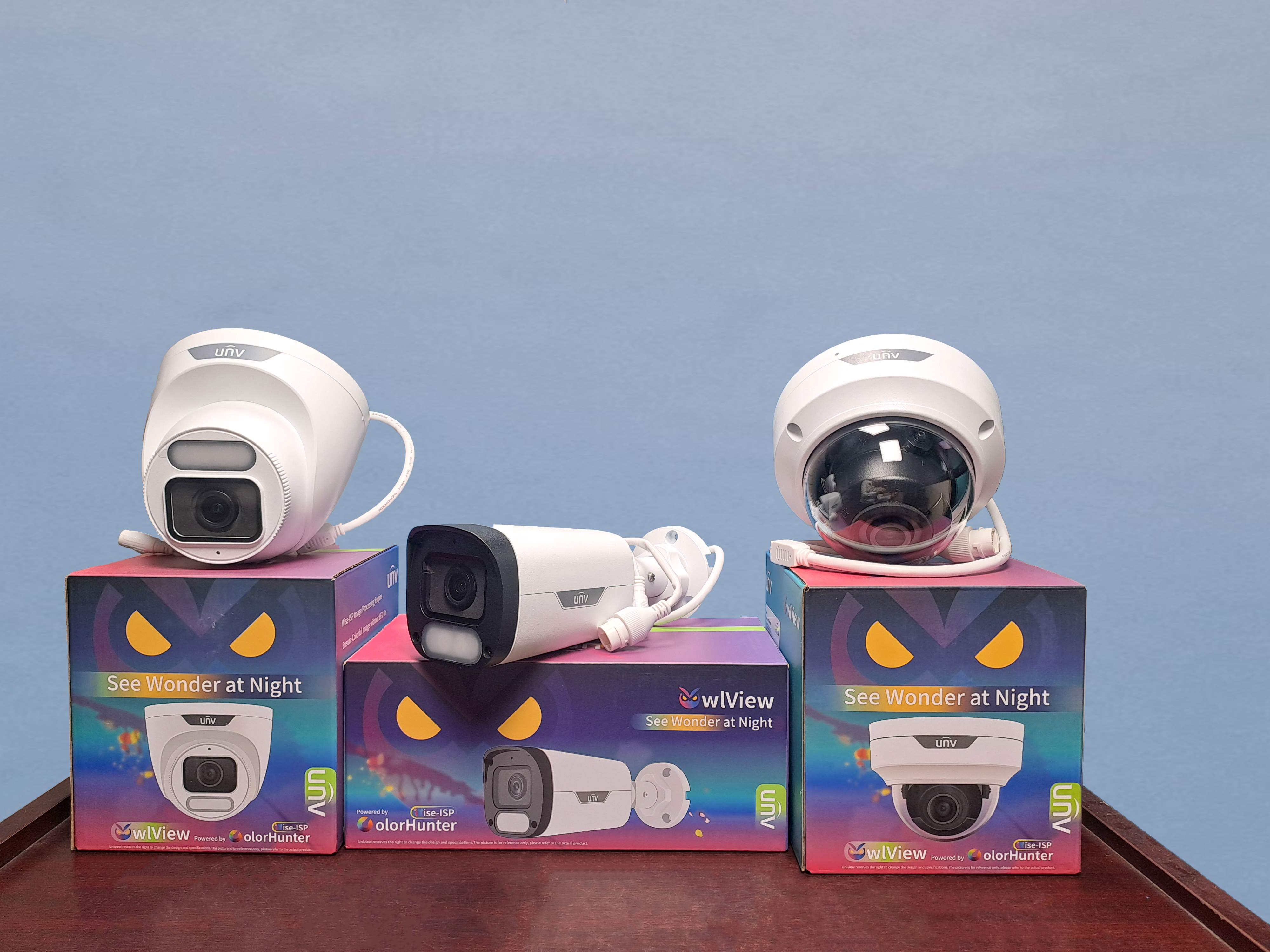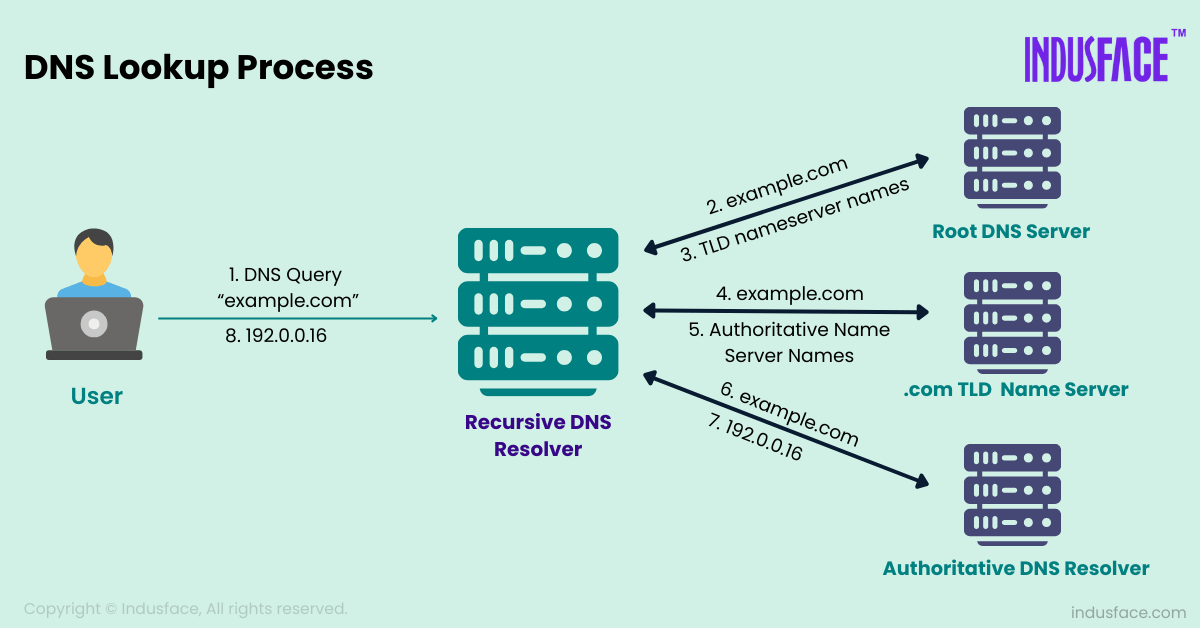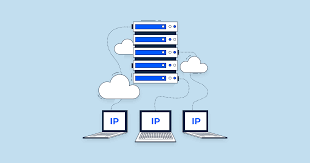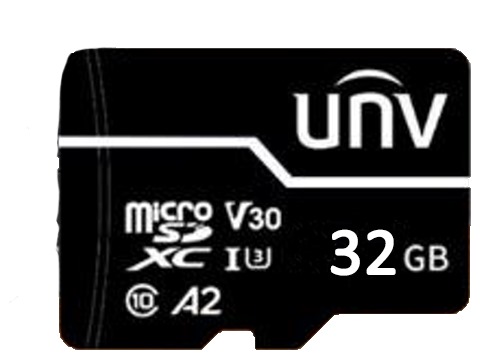- 3-Axis: Cameras that feature a 3-axis mounting bracket (bullet cameras) or 3-axis gimbal (dome cameras) allow you to mount the camera virtually anywhere (wall or ceiling) and position the camera at any angle to achieve the field of view you desire.
- 3D-Noise Filter: This is an enhanced form of digital noise reduction. Technological advancement enables noise to be filtered more effectively from the image, even in low-light conditions.
- 50Hz: This is the main frequency used in the UK, Australia, and most European countries.
- 60Hz: This is the main frequency used in the United States, Canada, and some Latin American countries.
- AGC (Automatic Gain Control): In low light conditions, the camera will automatically boost the gain control so that people and objects can be seen more clearly. The advantage of this technique is that your camera will produce images in much lower light conditions. The downside is that the amplification will increase the video noise visible.
- Alarm Input: Some DVRs and security cameras have alarm inputs, which can accept input from a sensor device such as a door contact or a passive infra-red motion detection which triggers the camera or DVR to take some action such as to begin recording.
- Anti-flicker: As fluorescent lighting operates at the same frequency as your mains power, this will cause luminance flicker when viewed through the camera. Enabling the available anti-flicker options can reduce or eliminate the visible flicker.
- Anti-smearing: A smear effect means a bright vertical line originating from a bright light source appears in the image. This happens especially with backlighting. Enabling this allows people and objects to be seen correctly against a bright background.
- AP Mode: This mode allows wireless communication with the provided cameras, however, your RECORDER must be physically connected to your router to gain Internet access.
- Aperture: The opening of the CCTV lens. The size is controlled by the iris and is measured in F numbers. Generally, the lower the F-number, the larger the aperture is, and consequently more light can pass through the lens.
- Auto DNS (Domain Name System): A service that stores domain names and translates them into Internet protocol addresses. For example, www.google.com will have a DNS server address that is equivalent to 74.125.224.72. For this option, the DNS server is automatically provided by your Internet service provider.
- Auto-focus: Will adjust the lens of your camera to focus on an object being viewed.
- Auto Iris: Security cameras with auto iris, have the ability to compensate for large variations in light levels. This is useful for security cameras that need to adjust for changes from bright sunlight to darkness or night. Auto iris circuitry is normally linked to a motorized drive that opens and shuts the iris on the camera lens. Closing a physical iris is a much better way to protect a camera from being damaged by bright sunlight than simply using electronics to reduce the signal strength.
- Balun: A Video Balun enables the transmission of video using unshielded twisted pair wire instead of coaxial cable. The word “balun” comes from combining the terms balanced and unbalanced. The function of a balun is to transform an unbalanced signal into a balanced signal. When the video signal is transmitted through a coaxial cable, the distance traveled by the signal is limited because the signal is in the form of an unbalanced signal that is susceptible to Radio Frequency Interference or noise. Coax cable incorporates special shielding to minimize noise. Video Baluns transform the video signal into a balanced form in which each wire in the twisted pair transmits an identical signal with opposite polarized magnetic fields. Noise affects each signal equally. When the signals are combined, the noise is canceled out. By using a designed balun, an unshielded twisted pair wire can transmit video for much longer distances than coax cable and with a lower cable cost.
- Bit rate: The amount of data that your RECORDER will use to record video. The higher the bitrate, the more space each recording will consume on the hard drive. Increasing this will also consume more bandwidth when streaming. The unit of measurement is either Mbps (megabits per second) or kbps (kilobits per second).
- BNC Connector: BNC is a connector for coaxial cable that is most commonly used for CCTV installations.
- BLC (Back Light Compensation): This is a feature of security cameras that automatically adjusts the image to compensate for bright light to give more detail on the darker areas of the image. For example, use is to focus on the detail of the face of a person that has the sunlight shining from behind.
- Brightness: This changes how light the image appears to be. Its value is different in darkness from that in daylight. For example, car headlights' lights appear brighter at night.
- CCD (Charge Coupled Device): Charge Coupled Device, CCD, is one of the two main types of image sensors used in security cameras. When a video is recorded, the CCD is struck by light coming through the camera’s lens. Each of the thousands or millions of tiny pixels that make up the CCD converts this light into electrons. The number of electrons, usually described as the pixel’s accumulated charge, is measured and then converted to a digital value. This last step occurs outside the CCD, in a camera component called an analog-to-digital converter.
- Contrast: This increases the difference between the blackest black and the whitest white in the image. Without contrast, there wouldn’t be an image because there would be no differentiation between light and dark.
- C Mount Lens & CS Mount Lens: There are two main types of lenses used in security cameras. The C mount lens has a flange back distance of 17.5mm. The CS mount lens has a flange back distance of 12.5mm. C-mount lenses therefore have a longer focal distance. CS mount became widely used because it is more practical for many of today’s more compact cameras. Lenses are often supplied with a 5mm spacer ring (sometimes called a C ring) that allows a C-mount lens to be used on a CS camera. Most modern security cameras are CS.
- Co-Axial Cable: A type of cable typically used in CCTV installations that has a central conductor, surrounded by a shield sharing the same axis. The shield can be made from a variety of materials including, braided copper, or lapped foil. There are various standards for specific types of co-axial cable. The cable used for normal CCTV installations is called RG59.
- Composite Video: The encoded output of a surveillance camera whereby the red, green, and blue video signals are combined with the synchronizing, blanking, and color burst signals and are transmitted simultaneously down one cable.
- Compression: Digital video pictures can be compressed with several techniques. These include JPEG and JPEG-2000 (for still images), M-JPEG, and MPEG (for moving pictures).
- DDNS (Dynamic DNS): This is a service that converts IP addresses into host names (this is a lot easier than trying to remember an IP address). This makes DDNS a good fit for home networks, which normally receive an IP address from the ISP that will change occasionally.
- DHCP (Dynamic Host Configuration Protocol): Uses an appropriate server or router to enable dynamic assignment of an IP address to a device connected to the network.
- Digital Noise Reduction (DNR): Digital Noise Reduction (DNR) technology offers several benefits. First, DNR delivers a cleaner signal, resulting in up to 70% disk space savings – so you can store more video evidence on your hard drive. Next, cameras equipped with DNR technology deliver a more visually appealing image, making it easier to identify suspects. Finally, DNR technology makes it easier for your camera to distinguish between true motion and image noise – allowing for your DVR to be more efficient in motion detection – especially in low light conditions. How it works: The chip in a camera is constantly picking up noise (fine static) in your images, especially in low-light modes. DNR technology compensates for this, correcting imperfections in the image by removing a large percentage of this noise. When a DVR or computer is processing the video data, it must compress and save every part of the image that is moving. The less noise in the image, the less data the DVR will save, and the more real motion it will detect.
- Display Resolution: This is the number of pixels supported by your TV or VGA monitor or the output signal of a viewing device, e.g. your RECORDER. 1920 x 1080 resolution will give you the best display quality.
- DNS Server: This is a standard technology for managing public names of websites and other Internet domains. DNS technology allows you to type names into your web browser and your computer will automatically find the address on the Internet.
- DST (Daylight Saving Time): This is the year when clocks are moved one hour ahead.
- Event Notification: The device will send a notification when a triggered event has occurred.
- Focal Length: The distance between the center of a lens, or its secondary principal point, and the imaging sensor. Lower lengths give a greater field of view and less magnification. Longer lengths give a narrower field of view and greater magnification. The table below gives an approximate value for the angle of the field of view for lenses of various focal lengths and also considers the size of the imaging device (CCD). Most CCTV cameras have one of the 3 sizes of imaging devices listed below, 1/4″, 1/3″ or 1/2″. Almost all CCTV Camera Pros cameras have 1/3″ Sony CCD imaging devices.
- Format: This is a command that prepares a storage device such as a USB flash drive or hard drive to hold data.
- Firmware: The software that operates a discrete device (e.g. your smartphone). It is referred to in this way rather than software as it is integral to the operation of your device.
- Frame Rate: The measurement of the rate at which pictures are displayed to create a video feed. The unit of measurement is frames per second (fps).
- Gain: An increase in voltage or power, usually expressed in dB.
- Gateway: A node or router that routes traffic from a device on your home network to the outside network that is providing access to the Internet.
- Ground Loop: An alternating current (AC) that can be produced in a cable. This is usually caused by parts of the system being fed from different electrical sources resulting in different earth potentials at each end of the signal path. This results in interference of the video pictures in the form of a black shadow bar across the screen or as a tearing effect in the topcomer of a picture.
- H.264+: Mass video data requires increased storage capacity. To resolve this issue, video compression technologies are used to reduce the data while maintaining image quality. H.264+ is an innovative encoding technology aimed at surveillance video.
- Hertz (Hz): The number of variations per second (e.g. picture frames, alternating of the current, etc).
- HTTP Port: HTTP stands for Hypertext Transfer Protocol. This port is used to log into the web browser interface of your RECORDER using a web client, such as Internet Explorer.
- Hue: This is somewhat synonymous with what is usually referred to as colors. By altering the hue, you can change the color mix of the image.
- Infrared (IR): Low-frequency light below the visible spectrum. Infrared is used in surveillance cameras to provide a light source to record images in dark and zero-light conditions
- IP Address: The address of a device attached to the network. Each device on the network must use a unique address. IP addresses range from 0.0.0.0 to 255.255.255.255.
- IP Channel: This is a list of cameras that are either directly connected to your RECORDER or connected directly to your network. This will typically display the camera’s name, IP address, channel number, status, user name, and password.
- IP Waterproof Rating: IP waterproof ratings are a BSi standard measurement for how waterproof something is. Many security cameras or camera housings are designed for outdoor use and need to be waterproof. The IP rating number has two digits, and optional letters after them. E.G IP66 and IP68. The first number defines the protection against the ingress of foreign objects. 0 is the lowest rating and means non-protected. 6 is the highest rating and means dust-tight and protects against access with a wire. The second number defines the level of protection against ingress of water. 0 is the lowest rating means non-protected. 8 is the highest rating and means protects against continuous immersion in water.
- Junction Box Mounting: Outdoor dome cameras feature J box mounting enabling the camera to be directly mounted to an installed junction box, providing faster, easier installation.
- Lens: A transparent optical component consisting of one or more pieces of optical glass with surfaces curved (usually spherical), so that they converge or diverge the transmitted rays of an object, forming a real or virtual image of that object.
- Live View: This is the default display mode for your RECORDER. Each camera connected will be displayed on-screen.
- Local De-warping: Some fisheye or 360 cameras feature local de-warping which enables viewing of portions of the full video image produced by the fisheye without distortion.
- Loop Out: A loop-out connection enables you to run a video stream from a single camera to a separate monitor on every channel. This feature is especially ideal for public-view monitors and reception desks.
- Lux: Unit of light illuminance used as a measure of low-light recording capacity in security cameras. Cameras with a Lux rating of 0.2 Lux or less would be considered low-light cameras. It is not possible to get good color definition in low light levels, so in general low light cameras are always black and white. Day/night cameras use electronics to switch from color during the daytime, to black/white during night or low light conditions. Many low-light cameras also use infrared, which is useful in zero-light conditions. The lower the LUX rating of a camera, the better it will see in low light.
- MAC Address: This is a unique identifier for network hardware.
- Main Stream: This is the video feed that your RECORDER will display and record.
- Mask: This is used to obscure part of your image for privacy. It can also be used to minimize false triggers when your RECORDER detects motion. Any area obscured won’t be shown live or recorded.
- Megapixel: Pixels are used as a unit of measure. In the security industry, it’s a measure of resolution. Mega refers to 1 million, therefore, a megapixel means one million pixels. If you have a 2.0 megapixel camera, in actuality you have a 2 million pixel camera.
- Menu: This is where you control the various actions and options that are available on your RECORDER.
- Motion Detection: This is the main method used by your RECORDER to detect motion and is an essential part of your security system. It does this by comparing one frame of video with the next. A certain amount of difference between these two frames is interpreted as motion.
- Multi-streaming: This enables you to set your recording resolution at one rate and watch live video at another rate.
- NAS: Network Attached Storage. A network device with one or more HDDs that other network devices can use as if the storage was connected directly.
- Network IP Camera: An IP (internet protocol) or network IP camera captures and transmits live and recorded video images directly over a network. A network camera requires a high-speed internet connection, router, Ethernet cable, and IP address to function, and it plugs directly into your network router and transmits data through the network.
- Network Video Recorder (NVR): An NVR is a hardware box that receives video streams over a LAN (local area network) or WAN (wide area network) and records the video streams in digital format onto a hard disk. Recording and playback of video can be managed remotely from any compatible device such as a PC, laptop, or smartphone that is connected to the network.
- NIC: Network Interface Controller. The hardware component that allows a device to connect to a network. Both wired and wireless NICs exist for these respective purposes.
- NTP (Network Time Protocol): This is used to synchronize your RECORDER’s clock automatically with a network time server.
- NTSC: NTSC is an abbreviation for the National Television Standards Committee. The term “NTSC video” refers to the video standard defined by the committee, which has a specifically limited color gamut, is interlaced, and is approximately 720 x 480 pixels, and 30 frames per second (fps). This standard is used in North America.
- OSD (On-screen Display): Display information from the camera such as time, date, and camera name on-screen.
- ONVIF Compliant: An ONVIF-compliant product conforms to ONVIF (Open Network Video Interface Forum) specifications for IP-based security products. ONVIF defines a common protocol for the exchange of information between different network video devices from different manufacturers, to allow greater interoperability in multi-vendor network video systems.
- Pack Duration: Instruct your RECORDER to split recordings into discrete units. Each unit can be a maximum of 60 minutes in length. Your RECORDER will play these as one continual video.
- PAL: PAL is an abbreviation for Phase Alternating Line. This is the television display standard that is used mainly in Europe, China, Malaysia, Australia, New Zealand, the Middle East, parts of Africa, and other parts of the world. PAL uses 625 lines per frame and a frame rate of 25 frames per second.
- Power over Ethernet: PoE allows IP (internet protocol) devices to receive power and data over existing LAN (local area network) cabling; eliminating the need to install a separate power cable, simplifying installation and lowering cabling costs.
- Power Over Ethernet+ (PoE+): This feature enables the high-draw PTZ camera to utilize Power Over Ethernet (PoE) on a single CAT5 cable.
- PP PoE: Point-to-Point Protocol over Ethernet is the most common method that your router uses to log in to your ISP to enable your internet connection. This setting also exists on your RECORDER but is only for advanced users as the configuration required is difficult to complete and requires a modem-only device (or a modem/router set to modem-only).
- Pre-record: Allows your RECORDER to record for several seconds before an event occurs.
- Progressive Scan: Video signals are generated using horizontal lines. Progressive scan also referred to as non-interlaced scanning, draws every line of an image in sequence. The main advantage of a progressive scan is that motion appears smoother and more realistic.
- PTZ: A device that can be remotely controlled to provide both vertical and horizontal movement for a camera.
- Resolution: The measure of detail that can be seen in an image. The higher the number, the greater the detail available.
- RTSP: Real-Time Streaming Protocol. A network protocol designed to transmit video and audio information over networks and the internet in real time.
- Saturation: This alters how much color is displayed in the image. The higher the saturation, the more bright and vivid colors will appear.
- Server Port: This is a logical connection place and specifically, using the Internet protocol TCP/IP, the way a client program specifies a particular server program on a computer in a network.
- S.M.A.R.T.: Self-Monitoring, Analysis and Reporting Technology. This is an automatic system on modern HDDs and SSDs to detect potential drive errors before they occur.
- SMTP: This stands for Simple Mail Transfer Protocol. This is used to send an outbound email (e.g. from your RECORDER to an email address).
- SMTP Port: This is the port number used by an SMTP server to listen for email send requests. This is specified by your email provider.
- Tampering Detection: Tamper detection is a tamper notification feature that sends an alert if the viewing angle of the cameras changes, or if the viewing area has been blocked.
- Vari-focal (Zoom): This refers to a type of lens that can change the focal length. This allows adjustment of the magnification and field of view of the security camera.

